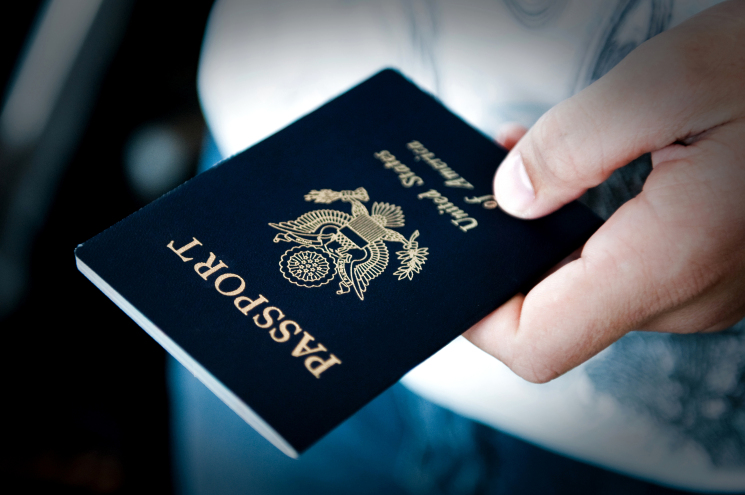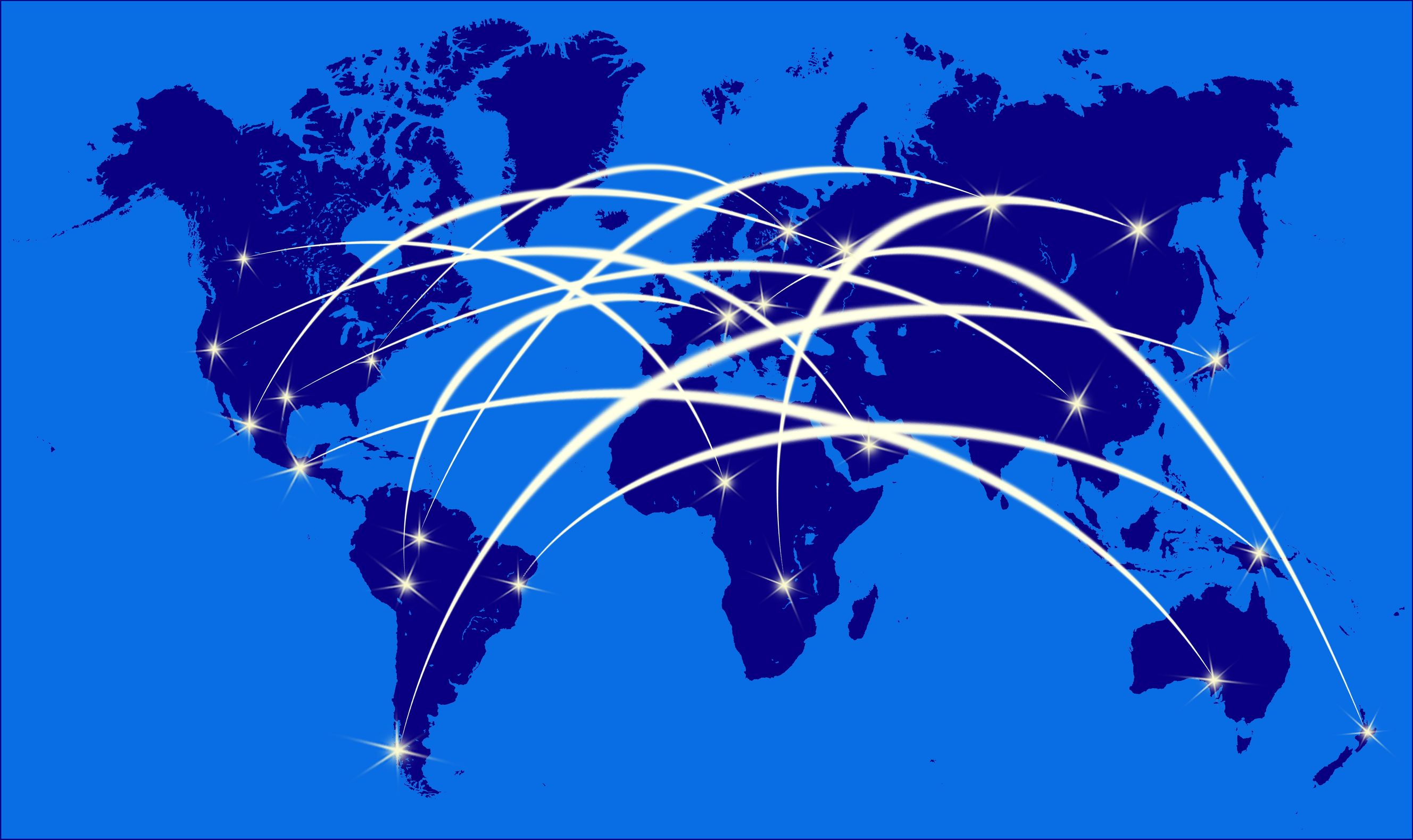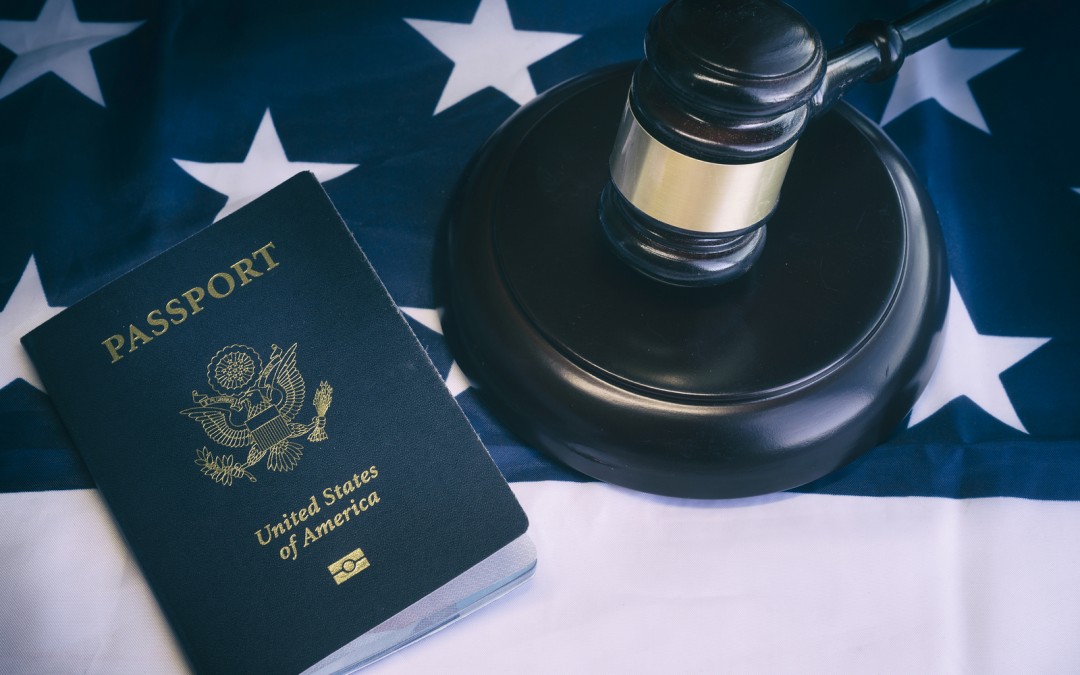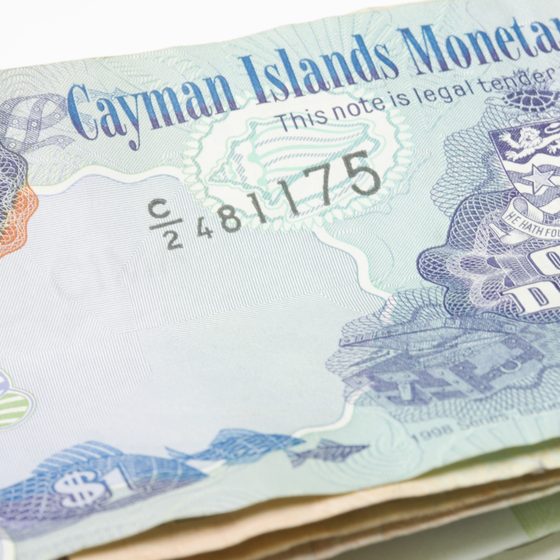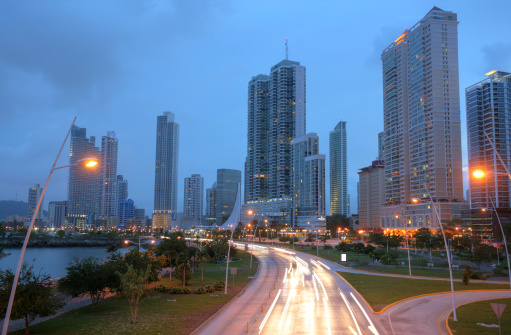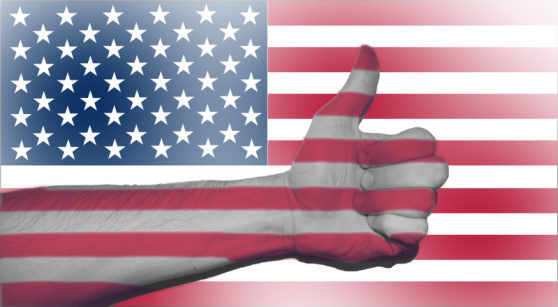Panama vs. Singapore by By Christian Reeves and Lief Simon (www.offshorelivingletter.com)
“Panama is the next Singapore,” declared a friend over lunch the other day. He wasn’t the first I’ve heard make the prediction.
Since finding its legs after the U.S. military handed over the canal, Panama’s economy has been on an uninterrupted upward trend. Even throughout the global recession of the past several years, Panama has racked up positive, albeit slower, growth.
Like Singapore, Panama is a shipping, banking, and corporate headquarter hub. Both countries are also tax havens. Where they diverge is gross domestic product (GDP) per capita and cost of real estate. Singapore’s GDP is about four times that of Panama, depending on the statistics you look at. The population of Singapore is about 50% greater than that of Panama, making this GDP figure even more stunning.
The average price per square meter for apartments in Singapore is eight times the current average cost in Panama City. (And we’ve been complaining about property values in Panama City!)
The point is that both of these statistics are being used as predictors for Panama’s potential. The consensus is that Panama is looking at at least another decade of continued tremendous growth rates.
I agree.
Panama has 100 times more land area than Singapore. As a result, there are different markets at work in this country. While real estate prices will continue to increase in Panama City as the country continues to mature and will, sooner or later, I believe, reach levels to qualify as “expensive” in a global context, prices in the interior of this country and in most of the beach areas will remain more affordable than those in comparable options in the United States. That will allow Panama to continue to attract retirees from North America and Europe.
Banking, shipping, business, tax benefits, and retirees: That is a dynamic combination for the Panamanian economy, which has grown at a rate of at least 7.2% per year every year since 2004, with the exception of 2009 (the “slow year”), when it grew at a rate of 3.9%. Unemployment is low, at 4.2%. In fact, the country is growing so quickly that it can’t educate and train its own citizens fast enough to keep up with the ever-expanding job market. The new “Specific Countries” residency visa, which comes with the possibility of a work permit for citizens of 47 countries, is one attempt to ease the strain the country is experiencing trying to find qualified workers for all the international companies relocating here, not to mention the local businesses and banks.
Global Banking Haven?
Historically, Panama has been generally acknowledged as a “banking haven.” No question, this is an international banking center; there are currently 78 banks licensed in this country. However, there is no longer any pretext of banking privacy or secrecy; not since November 2011 when Panama signed an exchange-of-information agreement with the United States.
Still, there are a lot of banks here and a lot of banking options. Like most offshore banking destinations, Panama offers two kinds of banking—local and international. Of the 78 banks licensed in Panama, 2 are state owned, 28 are international banks, and 48 are general licensed banks. International banks can only take clients from outside Panama, while general licensed banks can have both local clients and clients outside the country. The main difference from a practical point of view is that international banks don’t offer day-to-day banking services such as checking accounts or mortgage lending. These are places to keep investment, not operating, accounts.
You can see the full list of banks in Panama here. LINK TO http://www.superbancos.gob.pa/en/igee-general-information
The problem with most of the 48 general licensed banks in Panama is that, while they can take foreign (that is, non-resident) clients, in the current climate, they tend to not want to. That said, a colleague walked into Balboa Bank and was able to open an account as a non-resident foreigner with remarkably little hassle. He had his bank reference letter and his passport, which is all you need in theory. However, when it comes to banking overseas, the theory can be one thing, while the reality is something else.
While I’ve given up on identifying a local bank in Panama that will consistently open accounts for foreigners, ones to try in addition to Balboa Bank (which recently merged with Banco Trasatlantico and seems to be interested in growing its client base)include Banco General (one of the biggest banks in Panama in terms of number of branches), and Global Bank (where some I know have recently reported having good luck opening accounts).
All banks in Panama offer some level of internet banking, but check the details of this before investing the time in getting an account open to make sure you can initiate wire transfers online if that’s something you’ll need to do. Balboa Bank offers that service online, as well as an English-language version of their interface. This is notable, as many banks in this country don’t have English versions of their websites.
Many of the general licensed banks offer consumer as well as private or investment banking. If you’re a private banking client (meaning you’ve deposited US$250,000 or more), then you’ll generally have an easier time opening an operating or consumer account with one of those banks.
Again, the international banks operating in Panama deal only with foreign clients. Further, the minimum account balance required to open an account with one of these banks is US$1 million or more.
One exception is Banca Privada d’Andorra (BPA), which has a branch with an international license in Panama. BPA will open an account for you with a minimum account balance of US$100,000 (although they prefer US$250,000). Their online banking interface is in Spanish, French, Catalan, and English. You can contact Yariela Montenegro at y.montenegro@bpa.ad for more information about BPA’s services.
With the growing cost of the compliance required of any bank with American clients, many of the world’s international licensed banks are simply opting out of dealing with U.S. citizens, even those with the funds to open an account with US$1 million. Meantime, with everything going on in the global banking industry, banks are changing their policies and rules regularly. One bank that will open an account for a foreigner today may not next week and vice versa. We’ve watched this in Panama. Last year, for example, the executive committee of Unibank, a bank we’ve been recommending to readers since it opened in December 2010, decided that they would no longer take non-resident foreigners as clients except in their private banking division (US$250,000 minimum deposit). In December, they reversed that decision, but implemented a US$300 application fee for any foreigner wishing to open an account. Probably the back and forth and the new application fee are a reaction to the escalating cost of compliance when dealing with foreign clients.
Panama banks are generally solid, as the country’s Superintendent of Banking strictly monitors all bank activity. Currently, one bank is in “forced liquidation.” I’m not sure what that means, but banks don’t fail in Panama. When a problem does arise, the Superintendent takes action.
One specific occurrence a few years ago had to do with Stanford Bank in Antigua (the island, not the town in Guatemala). Stanford went bust because of malfeasance of the founder, and all related banks in different countries were affected. The Panama subsidiary of Stanford was closed, its assets frozen. The U.S. entities handling the case against Allen Stanford tried to seize the Panama assets, but the Panama Banking Superintendent wouldn’t allow that. After about 18 months, Stanford in Panama was sold to a group that reopened as Balboa Bank (still in operation today). All the Stanford Panama clients received the return of their funds.
It’s difficult to try to make a direct comparison of banking in Panama with that in Singapore. There are more banks and financial institutions in Singapore, which also offers more types of licenses. The number of banks in Panama has been relatively stable over the last 10 years, with new banks opening as other banks merge. Meantime, the volume of banking in Panama has increased, and I expect the number of banks to continue to increase as more international banks decide to open branches in this country.
Business And Taxation
One of the biggest advantages to Panama as a jurisdiction right now is that it is the best place in the world to run a business. Not a local business. I’d say that running a local business here in Panama would come with all the same challenges of running a local retail business anywhere in the world. In addition, though, the important thing to note about local trade in Panama is that much of it is restricted to foreigners. Most professions – doctors, lawyers, accountants, etc. – are restricted to Panamanian citizens, as are retail businesses. Most foreigners who want to be in business in the country focus on tourism-related opportunities or other service-related businesses…or restaurants.
If you’re looking for a place to launch or relocate an international business, however, you won’t find a better locale…
Except, perhaps, Singapore. I’d say these two countries are the top choices worldwide for where to base an Internet, consulting, or other laptop-based business. And, given the choice between Panama and Singapore, I’d choose Panama (as I did five years ago when my wife and I decided to relocate from Paris to Panama City to launch the Live and Invest Overseas business). Singapore is a far more expensive place to live and to do business. It’s also halfway around the world and many time zones away from your customer base if your customer base is based in North America.
One important reason Panama is as appealing as a doing-business choice as it is, is because it is a jurisdictional-based tax regime. That means any person or entity is taxed in Panama only if his, her, or its income is earned in Panama. Further, Panama doesn’t impose tax on interest income from deposits in Panamanian banks. Therefore, it’s possible, if you organize your life appropriately, for an individual to live in Panama free of any Panama income tax liability. Don’t earn any money in Panama, and you owe no tax in Panama. It’s as simple as that.
The easiest strategy for setting yourself up to be in Panama and in business without earning any income in Panama is to start a consulting or internet business based outside Panama. Create a non-Panamanian entity to house your non-Panamanian business, earn your income outside Panama (by consulting for a client in Costa Rica, for example), and have your clients pay your non-Panamanian company.
What you can’t do is set up a physical business in Panama with a non-Panamanian business providing the goods, and then have the non-Panamanian entity charge enough to the Panama company to keep it from showing any profit in Panama.
Panama has two rules that void that practice. One is simply an implied income tax on the gross revenue of a company if the company continually shows no profit. It’s essentially a minimum income tax charged at 1.168% of gross income for companies with gross revenue of US$1.5 million or more if the calculated tax on net income is less.
The other rule has to do with transfer pricing between affiliated companies. Panama passed a law last year specifically addressing this. A company with a Panama operation and a foreign subsidiary that provides products or services for local sales cannot charge above market prices for those products and services to the Panama entity in order to reduce the taxable income in Panama.
If you want to start a business in Panama for local trade, the tax rate is a flat 25% tax on net income. However, again, Panama places many restrictions on foreigners doing business locally.
To avoid this 25% tax on local business profits, you could consider basing your local business in either the free-trade zone in Colon or the Panama Pacifico “city” being developed at the former Howard Air Base outside Panama City. The free-trade zone in Colon is essentially a place to warehouse and modify goods to be shipped out of Panama. You can import and export goods to and from this zone with no tax implications, including no income tax. Any goods brought into Panama from this zone, however, are subject to import duties.
Panama Pacifico has been designated a tax-free zone for companies that qualify. The 13 categories of businesses that can operate here tax-exempt are:
Distribution centers of multinational companies
Back office operations
Call centers
Multimodal and logistics services
High-tech product and process manufacturing
Maintenance, repair, and overhauling of aircraft
Sale of goods and services to the aviation industry
Offshore services
Film industry
Data transmission, radio, TV, audio, and video
Stock transfer between on-site companies
Sale of goods and services to ships and their passengers
Corporate headquarters
Another benefit of basing your business in Panama Pacifico is the opportunity that creates for you, as the business-owner/employer to be able to obtain work permits for foreign employees beyond the usual 90/10 rule. The 90/10 rule, which applies to all businesses operating in Panama outside Panama Pacifico, means that the business must employ nine Panamanians for every one non-Panamanian.
In recent history, again, the exception to this requirement that 90% of the employees for any business be Panamanian, has been to base yourself in Panama Pacifico. However, the new “Specific Country” residency permit means that this Panama Pacifico benefit isn’t as big a deal as it used to be. Now, any foreigner from any of the 47 countries included on the Specific Country visa list can obtain residency and a work permit, creating a chance for businesses to hire non-Panamanian labor without restriction. I believe this window of opportunity will continue only until President Martinelli is out of office. Martinelli created the new visa program through special Executive Order. The guy who follows him in office likely will repeal the order.
Unless the guy who follows Martinelli in office isn’t a guy at all but Mrs. Martinelli, as is lately being discussed.
Structures
Another important benefit of Panama as a jurisdiction includes the offshore services available here. In this way, too, Panama is very similar to Singapore. While Singapore has taken the offshore structures game to a next level, as it has been at this for much longer, Panama is working hard to catch up.
Panama offers corporations, trusts, and foundations. Again, Panama corporations pay no income tax in Panama if they don’t earn any money in Panama, making a Panama corporation a very appealing option for structuring business operations in other locations.
You can also use a Panama corporation to hold real estate in Panama or outside the country. Historically, this strategy provided important benefits to do with property and capital gains taxes. However, the rules for these things have changed recently, making this less of a no-brainer option. It can still make sense to hold Panama real estate in a Panama corporation, but not always.
Here’s how this used to work:
Once the Panama property was put into a Panama corporation, the “value” was locked into the public property registry. When the owner decided to sell, he sold not the property but the corporation holding the property. Ownership of the property didn’t change, and, therefore, the public registry value of the property didn’t change. As a result, the amount of property tax charged for the property didn’t change either. In other words, property values could increase, but property taxes (which are figured on property values) could be held constant this way.
Additionally, it used to be that, while Panama did charge capital gains tax on the transfer of property, it did not charge capital gains tax on the transfer of company shares, saving the seller 10% of the appreciation.
This changed in 2006. Now, sellers pay capital gains tax on both the transfer of property and the transfer of company shares.
Finally, Panama charges a 2% transfer fee on real estate. Selling the corporation rather than the property avoided that tax, as well.
Bottom line, today, with capital gains tax charged on the sale of shares and property values being reevaluated for the purposes of property tax, as I said, holding Panama real estate in a Panama corporation isn’t the no-brainer decision it was years ago. The cost of setting up a corporation runs from about US$1,000 to US$1,500, depending on the attorney. Maintaining the corporation runs US$530 a year without nominee directors, which should cost around another US$250.
On the other hand, using a Panama corporation to hold non-Panama real estate can be an excellent strategy, with estate planning and asset protection benefits. American readers should note, though, that a Panama corporation cannot be treated as a disregarded entity for tax purposes; they are treated like corporations. An American considering options for holding real estate in different countries should consider an LLC, a trust, or a foundation, which can be better choices depending on your circumstances overall.
Few people think of Panama as a trust jurisdiction; most look to the Cook Islands or perhaps Belize for this kind of structure. However, Panama does offer trusts (an odd thing for a civil law country).
Panama also offers foundations which is the civil law equivalent.
Foundations work very much like trusts and can be a good alternative to a trust depending on your needs. On the U.S. side, for tax purposes, a foundation can be treated like either a corporation or a trust. You want to make sure you set everything up so your foundation is treated like a trust. If you’re an American, have your Panama attorney work with a U.S. attorney who knows something about Panamanian foundations to be sure that the wording of the foundation documents is such that the entity will be treated as a trust by the IRS. Otherwise, you risk negative U.S. tax implications.
One other thing to keep in mind with a Panamanian foundation is that, while the name may suggest that it is a charitable organization, it is not. A Panamanian foundation is a tax-paying entity and can be liable for tax, both in Panama (if the foundation has any Panama based income) and in the United States (if the foundation has any income at all).
Pushing For First World Status
Panama’s President Martinelli has set an ambitious agenda. He has declared that he’s pushing Panama toward First World status. To that end, he’s taking all the revenues being thrown off by the Panama Canal (and then some) and investing them in infrastructure improvement projects across the country. You can’t drive more than a few blocks in any direction in Panama City without encountering some kind of construction—road expansion or repaving, digging for the new city metro, new building construction or old building renovation, electric and phone cables being moved underground, tunnels, bypasses, etc. Every main thoroughfare in the city is being improved in some way. The latest extension of the Cinta Costera, the new highway and pedestrian area that runs along the Bay of Panama, will take motorists around Casco Viejo and to the Bridge of the Americas, allowing drivers to avoid the current log jam trying to exit the city.
Around the country, roads are likewise being improved, expanded, and dug anew. Plus, new airports, new hospitals (including a big one in Santiago), new schools, and new shopping malls. The landscape of this country is being remade before our eyes.
The investment opportunities that all of this translates into are tremendous. Someday, people could be saying that Singapore is like Panama City.

